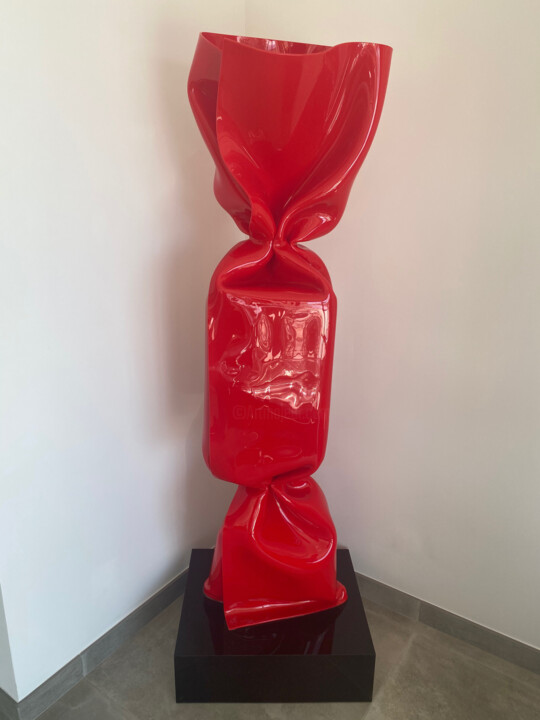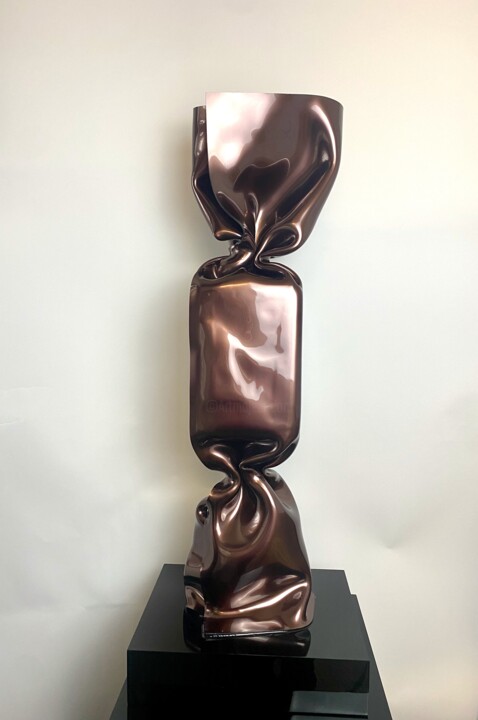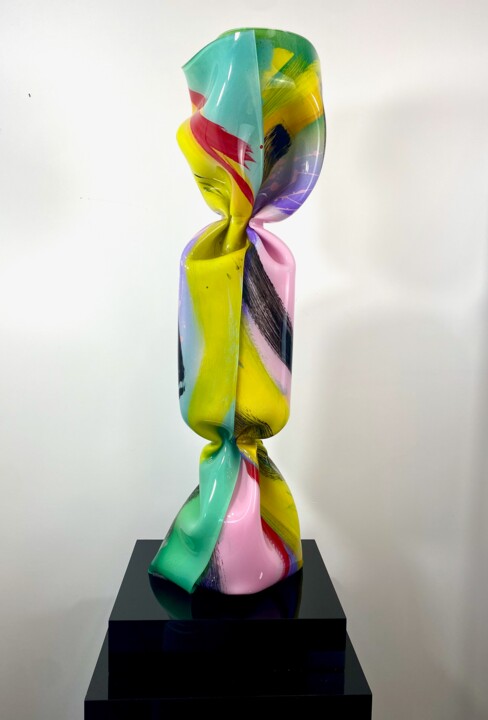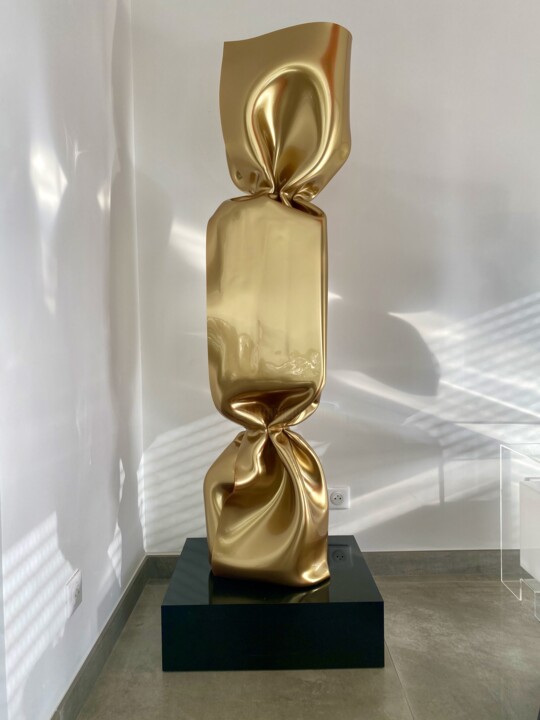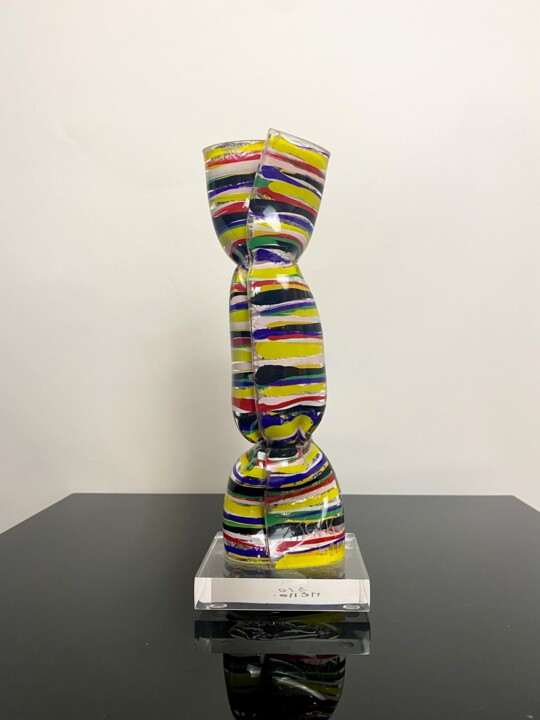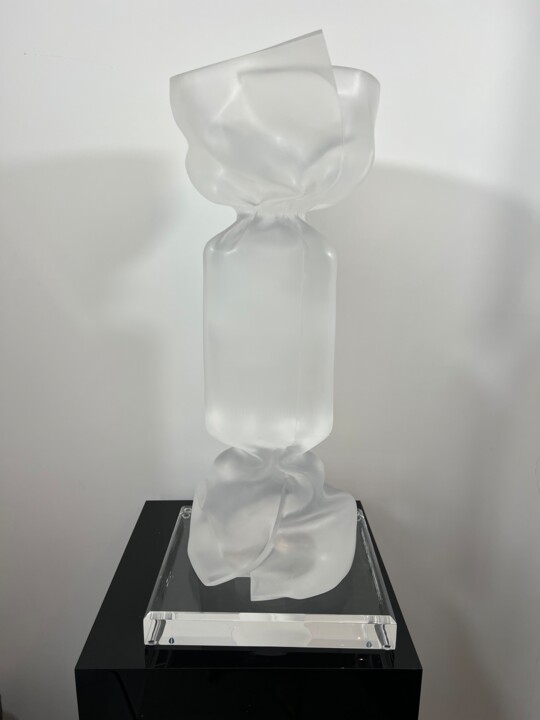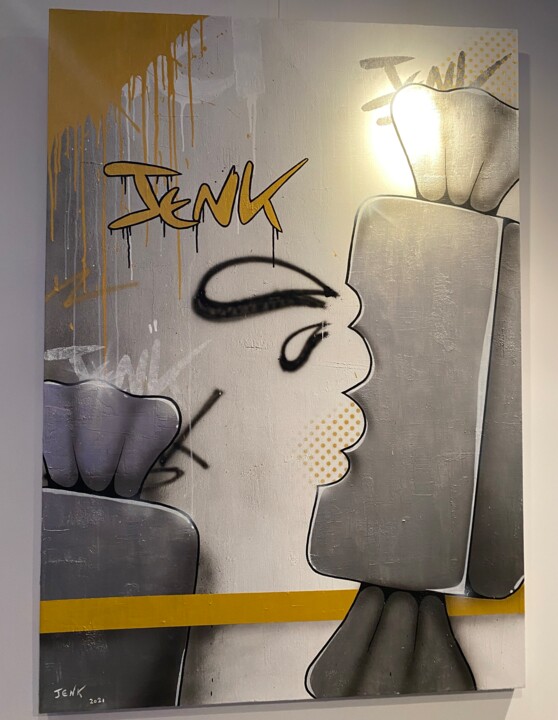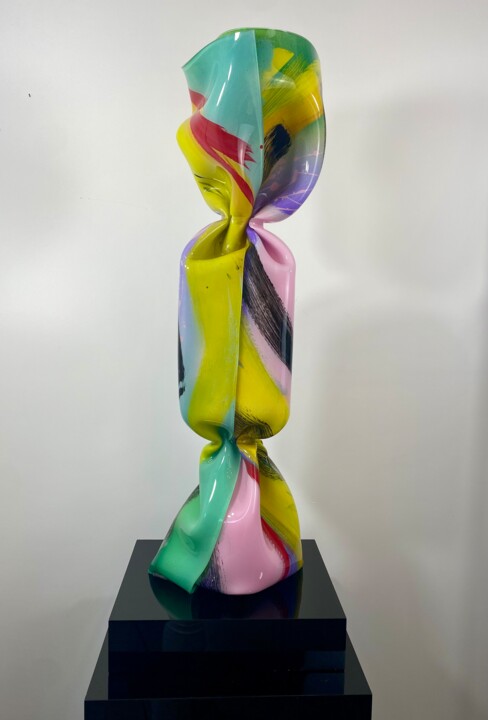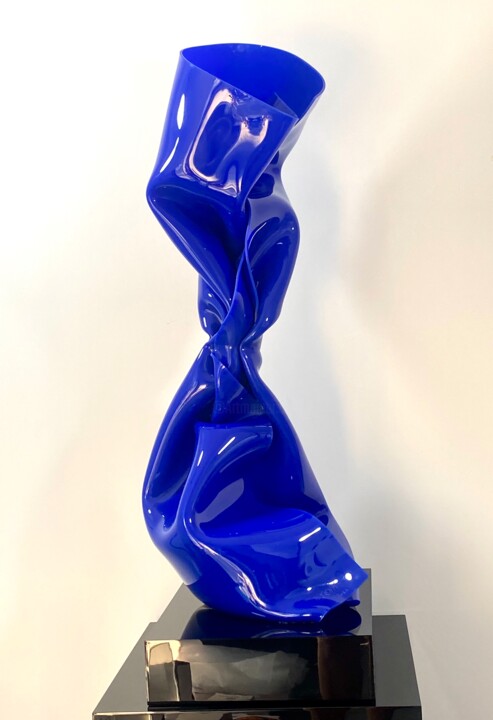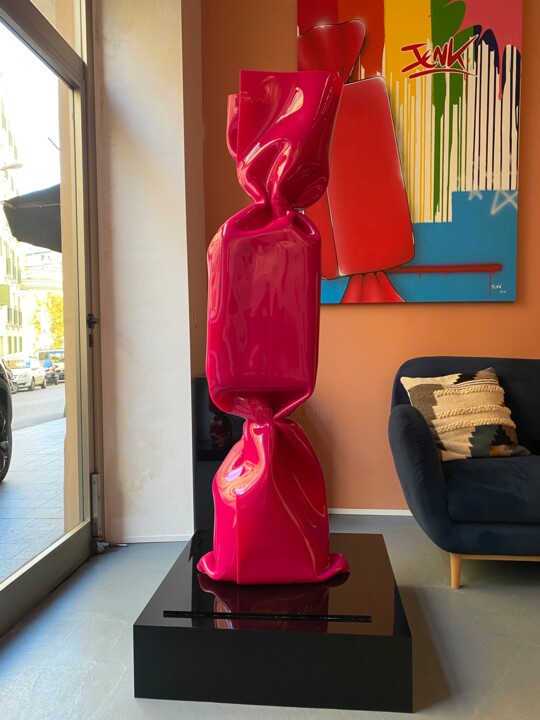What inspired you to create artwork and become an artist? (events, feelings, experiences...)
My artistic journey, entirely self-taught, took off during an intimate moment in my life: the prospect of motherhood. With my children's father's preference for me to stay at home, I was inspired to transform our family haven. Painting first seduced me, before sculpture came to enrich my expressiveness.
What is your artistic background, the techniques and subjects you have experimented with to date?
My artistic trajectory was enriched by evening classes at the prestigious Association of Fine Arts in Cannes. It was there that I discovered the delicacy of charcoal, the fluidity of watercolor, the liveliness of acrylic, and the finesse of engraving and ceramics. I dove deep into artistic conventions, exploring still life, the nude figure, plein air painting, and the delicate art of clay sculpture, from porcelain painting to mosaic.
My curious mind led me to experiment beyond conventions. My childhood, marked by the absence of sweets, inspired me with a daring idea: to use real candies in my works. I started by integrating them on canvas, creating tempting and tangy pieces, preserved under Plexiglas cases. Then, using scraps of this same Plexiglas, I heated it, twisted it, and shaped it to sculpt the “Candy” as I see it today. A modern reinterpretation of a childhood memory.
What are the 3 aspects that differentiate you from other artists, making your work unique?
Three distinctive elements crystallize my art and distance me from the conventional:
First of all, my unfailing determination to transform an object as everyday as candy into a monumental piece, elevating this humble element to the grandeur of a true work of art.
Additionally, my bold choice to focus on candy, a universally recognized symbol that transcends age, education, religion and political divides. It unites humanity in a shared familiarity.
Finally, my art is not simply visual. I was able to capture a subject that tickles all the senses: from the soft murmur of the packaging to the sweet scent, from the nostalgic taste to the familiar texture, all crowned by an explosion of colors for the eyes. It’s a multi-sensory experience.
 Portrait of Laurence JENK © Patrick Deguine
Portrait of Laurence JENK © Patrick Deguine
Where does your inspiration come from?
The essence of my art is rooted in memories of a childhood devoid of sweets. By sculpting these Candies, I seek to soothe the shadows of my past. Today, my quest goes far beyond a simple personal settling of scores. Through the twists of my creations, I express myself on the societal issues that concern me: ecology, rampant consumerism, the distress of abused women, the fragility of wildlife in distress, among others. Each twist in my works is a statement, a call to awakening to the great causes of our world.
What is your artistic approach? What visions, sensations or feelings do you want to evoke in the viewer?
My artistic approach is first of all introspective and personal, I create above all for myself, expressing myself through my sculptures. But the beauty of art also lies in sharing, exchange and transmission. I feel immense gratitude in having an audience that not only appreciates and understands my works, but also supports my artistic journey.
Creating is a source of joy for me, and I aspire to transmit this joy to those who contemplate my work, whether they have the opportunity to acquire a work or not. I firmly believe that art is universal and should be accessible to everyone, regardless of their socio-economic background. For this reason, I am convinced that art must move out of traditional galleries and into public places, in our cities, and other unconventional spaces, thus reaching a wider audience.
My exhibition in 2018 and 2019 at the Port Authority Bus Terminal in New York is a testimony to this vision. For almost a year and a half, I had the privilege of exhibiting my monumental Bonbons sculptures in this station frequented by nearly 200,000 people every day. What particularly struck me was the reaction of passers-by, often unfamiliar with the art world. Just seeing a smile appear on their faces when they saw my sculptures was a victory in itself for me. Most of them may never buy art, and that's not what matters most to me. What really matters is to have sowed a seed of happiness, to have marked their daily life, if only for a moment. And maybe, one day, somewhere, they will remember this monumental Candy, even if they forget my name. For me, this is where the true essence of art lies.
What is the process of creating your works? Spontaneous or with a long preparatory process (technique, inspiration from art classics or other)?
My working technique varies depending on the material chosen. Each medium requires a distinct approach and methodology to ensure the quality and integrity of the final work.
The process always begins with a sketching phase, during which I conceptualize my idea. Sometimes I also use virtual simulations to better visualize the final result. Once this phase is completed, I launch into the manufacturing process, choosing the techniques most suited to the chosen medium. For example, creating a work in bronze or aluminum differs considerably from that in Plexiglas. The smelting, casting and finishing process is specific to these metals. Likewise, working with polyester has different characteristics than marble sculpture, which requires suitable tools and carving techniques.
Do you use a particular working technique? if yes, can you explain it?
Following the initial sketching phase, and after any digital simulations, the creative process fully comes into play, requiring a technical approach adapted to the chosen material. The shaping of bronze or aluminum differs profoundly from that of Plexiglas. In the same way, the skill required to create a piece in polyester is not comparable to that required for marble.
Are there any innovative aspects in your work? Can you tell us which ones?
The avant-garde elements of my work arise from the imperative to anchor myself in modernity. I embrace technology, using the most sophisticated software, 3D printers, while having a keen interest in artificial intelligence, such as GPT chat, NFTs and this digital universe which inevitably influences and shapes art contemporary and future.
Do you have a format or medium that you are most comfortable with? if yes, why ?
Plexiglas is at the heart of my artistic approach. Its fascinating reaction to heat, its varied nuances and the creative possibilities it offers enchant me. Before sculpting in marble, bronze or aluminum, I always design a prototype in Plexiglas, demonstrating its central role in my creative process.
Where do you produce your works? At home, in a shared workshop or in your own workshop? And in this space, how do you organize your creative work?
My workshop is specifically designed to bring my creations to life. It is equipped with all the tools and machines essential to my artistic process. One area is reserved for painting, ensuring a dust-free environment, while another is dedicated to cooking, with an oven and a table provided for processing plexiglass. To sculpt my monumental works inspired by Candy, the space is designed to allow several people to work simultaneously around the central table.
Does your work lead you to travel to meet new collectors, for fairs or exhibitions? If so, what does it mean to you?
Indeed, my artistic approach often leads me to travel, both in France and internationally. These trips are an opportunity to attend openings in my honor, to unveil my latest works, and to forge links with collectors and key players in the artistic community. These trips, far from being a simple formality, are crucial. They allow me to strengthen my professional relationships and stay close to those who appreciate and support my work.
How do you imagine the evolution of your work and your career as an artist in the future?
The idea of retirement seems almost foreign to my bubbling creative mind. The passion for art, the desire to share and awaken emotions with my creations never fades. The theme of Candy, which propelled my fame on the international scene, remains at the heart of my projects. However, my ambition does not stop there. Driven by the causes that are close to my heart, whether they are environmental challenges, the animal condition or the failings of our society, I wish to shed light on them in a new light. Always inspired by this unique signature that is the twist, what I call the "twist", I plan to explore the world of luxury by designing refined jewelry and exclusive pieces of furniture. But above all, my dearest wish remains to rejoice in what I do and to bring joy to those who admire my work.
What is the theme, style or technique of your latest artistic production?
My most recent creation, a 2 meter work in transparent plexiglass decorated with floral motifs, was a real technical and artistic challenge. Initially, I suggested an alternative to this demanding collector, aware of the challenges that this order could generate. Nevertheless, his vision was precise: he wanted these floral motifs delicately painted on the transparent plexiglass. The creative process was fraught with challenges, from the complexity of the floral design to unexpected complications during firing, including the emergence of bubbles on the plexiglass in certain areas. The final phase, that of the twisting of this great work, had to be repeated six times to achieve the desired perfection. Finally, my satisfied client approved the work. This project reminded me that in the art world, things don't always go as planned, and that perseverance is essential.
Can you tell us about your most important exhibition experience?
One of the most significant exhibitions of my career was held in Cannes in 2011, during the G20 summit. Over a period of six months, I had the honor of displaying my 100 monumental sculptures "Bonbons Drapeaux" measuring 2 meters, resting on 75 cm bases, throughout the famous city of Cannes. In a symbolic gesture, a prestigious aisle made up of the flags of the G20 and the invited countries, in 80 cm format, adorned the interior of the Palais des Festivals during the conference days.
This exposure propelled me onto the international scene, crowned by 36 television interviews during the conference. In addition, as a diplomatic gesture, a miniature version of my Bonbons Drapeaux sculptures, 45 cm high and displaying the national colors, was graciously offered by the former French President, Nicolas Sarkozy, to the 20 leaders of the Member States as well as 'to the 4 Presidents of the invited countries, without forgetting the leaders of influential organizations such as the IMF and Greenpeace.
If you could create a famous work in the history of art, which one would you choose? And why ?
One of my wishes would have been to embrace inspiration similar to that of Marcel Duchamp when he boldly presented a urinal to the Society of Independent Artists in New York in 1917. This bold artistic gesture not only changed the artistic landscape of the time, but he also questioned the very definition of a work of art, thus introducing the revolutionary concept of "ready-mades".
If you could invite any famous artist (dead or alive) to dinner, who would it be? How would you suggest he spend the evening?
If I had the opportunity to invite an illustrious artist to dinner, it would definitely be Picasso. I would invite him to share with me the stories of his fascinating life, both on a personal and artistic level. I would like to listen to his anecdotes, feel the passion behind each work, and dive into the abyss of his immeasurable and inspiring creativity.


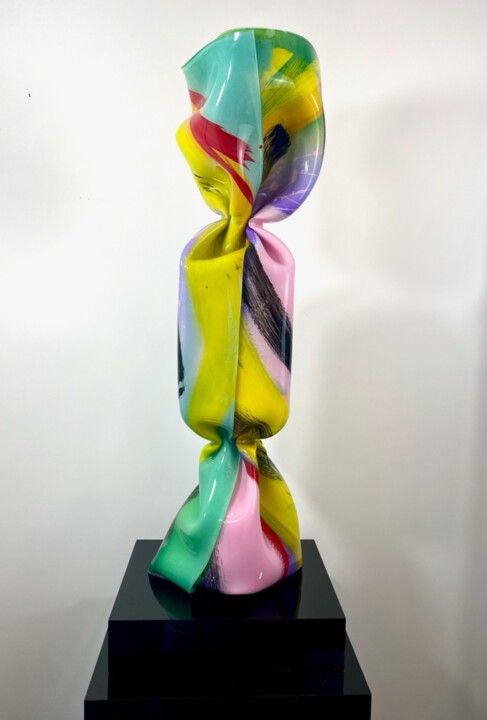


 Olimpia Gaia Martinelli
Olimpia Gaia Martinelli

